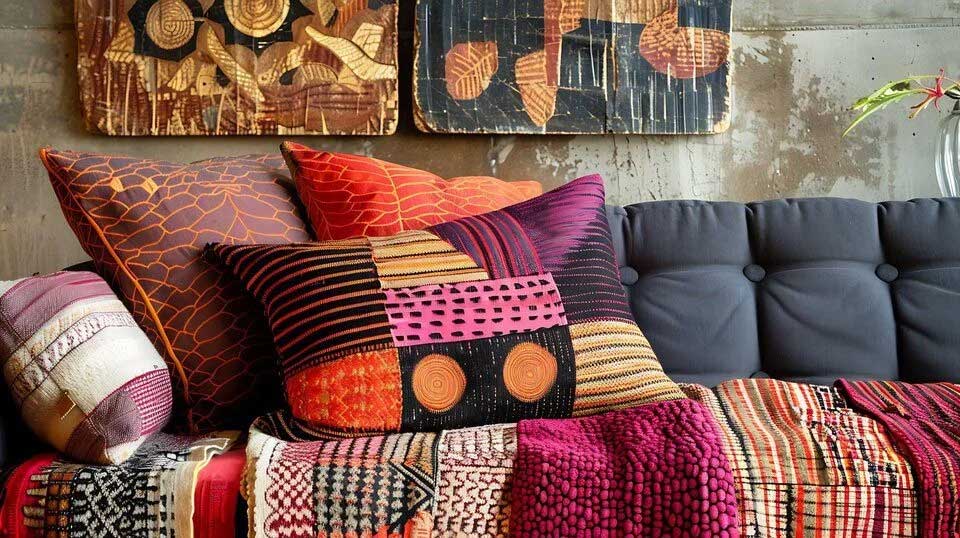"While Southeast Asia continues to enhance its role as a global manufacturing hub, Cambodia is struggling with slow growth in domestic garment business. In its attempt to move up the manufacturing value chain Cambodia is challenged with regulatory obstacles, insufficient infrastructure, lack of skilled workforce and slow demand globally. Cambodia’s Garment Manufacturers' Association revealed that the domestic footwear and clothing had fallen 30 percent this year and that political uncertainty had forced more than 70 factories to close or relocate."

While Southeast Asia continues to enhance its role as a global manufacturing hub, Cambodia is struggling with slow growth in domestic garment business. In its attempt to move up the manufacturing value chain Cambodia is challenged with regulatory obstacles, insufficient infrastructure, lack of skilled workforce and slow demand globally. Cambodia’s Garment Manufacturers' Association revealed that the domestic footwear and clothing had fallen 30 percent this year and that political uncertainty had forced more than 70 factories to close or relocate.

Over the past decade the garment industry in Cambodia contributed almost 70-80 per cent of its total export revenue and generated huge scope of employment. In fact, Cambodia has emerged on the global scene as a major garment manufacturer and exporter, with low cost skilled workforce, favorable investment policies, and preferential access to Western markets. The surge in Cambodia's garment industry, combined with two decades of relative political stability and economic liberalization has helped the country rebound from decades of war and build one of the region's fastest-growing economies. However, over time, the garment industry has fallen victim to the country's many political and structural challenges.
Political unrest a dampner
Labour issues being one of the sensitive areas of political conflict, the garment industry is reeling under its heat. Post-2013 election, disputes over wages, working conditions and the role of unions have became highly politicized and massive strikes across the country has left a major impact on its economy. With 2017 and 2018 general elections approaching, Cambodia's political scene remains largely unsettled posing a major setback for the development of the domestic garment industry.
Over the past three years, repeated wage hikes have more than doubled pay for garment manufacturing jobs in Cambodia to $140 a month, putting the country on par with — or above — many of its regional competitors, including Vietnam, Bangladesh and Indonesia. Now, as opposition parties and unions are demanding that the rate increase to $177 per month. As other countries in the region, such as Myanmar and Vietnam, pursue international trade more aggressively, Cambodia's climbing manufacturing wages will continue to erode its competitive edge in the years to come.
Losing its unique position in global value chain

Labour wages in has seen a sharp rise within a very short time period when the country is still struggling to move up the manufacturing value chain and diversify its economy. Of the major garment exporters worldwide, Cambodia is among the most dependent on textile and clothing for export revenue, employment and investment, second only to Bangladesh. Though both countries suffer similar deficiencies in infrastructure and labor productivity, Cambodia's industrial capacity is still well below that of Bangladesh and largely operates at the downstream end of the industrial chain. Cambodia's garment factories are mostly owned by foreign brands, making the industry it vulnerable to external shifts.
Moving up the global value chain has not been an easy way for many countries. Although East Asian economies like Japan, Hong Kong, South Korea, and, more recently, China and Vietnam have managed to transition up, the process has been mostly reactive, peppered with inconsistencies and setbacks spread over decades. Currently, Cambodia has even more hurdles to overcome to transform its economy, including severe infrastructural deficiencies outside its main manufacturing centers, an unskilled labor pool, and high electricity and energy costs.
Over the past two years, investment from China and Japan has enabled Cambodia to broaden its economic activities to construction, service and light manufacturing (auto parts and electronics), despite an overall slowdown in investment. Though these diversification efforts have relieved some of the most pressing concerns over Cambodia's economy, political uncertainty and structural shortcomings is becoming major impediments on its way to economic development.












